Mechanical Characteristics of the Combination System of Medium-Diameter Anti-Slide Piles and Tunnel-Under-Landslide Loading
Abstract
:1. Introduction
2. Project Description
2.1. Engineering Background
2.2. Geological Boreholes
2.3. Crack Distribution
3. Experimental Model Design
3.1. Calculation of Pile Spacing Based on Soil Arching Effect
- ①
- As the spacing between the three piles of the combined pile and the main slip surface size is relatively small, the pile bodies are subject to greater landslide extrusion, and the soil and pile enclosed by the pile and pile can be approximated as an anti-slide whole. That is, it forms a triangular prism-shaped pile body.
- ②
- In this paper, a tunnel lining structure is in front of the combined piles so that the corresponding passive earth pressure will be provided. Due to the arc shape of the tunnel, this part is regarded as a rectangular retaining wall to facilitate the calculation of passive earth pressure.
3.2. Model Materials
3.3. Experimental Similarity Ratio
3.4. Model Test Design and Production
3.5. Measurement Point Arrangement
3.6. Loading Scheme
4. Observation Analyses of Combined Pile Model Tests
4.1. Model Test Failure Characteristics
4.2. Comparison Analysis of Displacement Distribution Law
- (1)
- The pile spacings corresponding to the horizontal displacement of the upper sliding body and the horizontal displacement of the top of the anti-slide pile from large to small in three different combinations of diameter pile spacing are 12.5 d (25 cm), 10 d (20 cm), and 7.5 d (15 cm) in order.
- (2)
- When the pile spacing increases from 7.5 d to 10 d, the horizontal displacement of the sliding mass and the horizontal displacement of the top of the anti-slide pile have significant gains in the net increase in horizontal displacement at the end of loading: 27.17 mm and 7.79 mm, respectively. The growth is 48.43% and 48.14%, respectively. When the anti-slide pile spacing is increased from 10 d to 12.5 d, the net increase in the horizontal displacement of the sliding mass and the horizontal displacement of the pile top are less, 31.2% and 28.5%, respectively.
- (3)
- According to the change in the displacement growth of the sliding mass with time during the loading process, the landslide damage evolution is divided into three stages: uniform displacement, accelerated displacement, and damage deformation. The pile top displacement also appears in the corresponding stage, as shown in Figure 18 and Figure 19. When the pile spacing is 7.5 d, the horizontal displacement of the landslide body and the horizontal displacement of the pile top grow more slowly with the increase in loading time. At the loading time of 0~75 min (corresponding to the load 0~10 kN), the horizontal displacement of the upper landslide body and the top of the pile under the action of three different pile spacing combination piles shows a uniform growth phenomenon. In 75~250 min (corresponding to the load of 15~30 kN), the growth rate of the landslide displacement increases more rapidly, and the slope body also appears to have deeper longitudinal cracks. After 250~350 min (corresponding to the load of 30~35 kN), the slope deformation rate is reduced and failure has appeared. This time, the pile displacement also appears in the stable stage, gradually reducing displacement. At the same time, the displacement and deformation of the tunnel present the same three deformation stages as those of the pile body (uniform displacement, accelerated displacement, and stable deformation). The tunnel displacement is 1 mm, 3 mm, and 5 mm under the action of three pile spacing at 7.5 d, 10 d, and 12.5 d (15 cm, 20 cm, and 25 cm), respectively. When the pile spacing increases from 7.5 d to 10 d increases the tunnel displacement by about 66.6%, and from 10 d to 12.5 d increases the tunnel displacement by about 40%.
- (4)
- The variation in the horizontal displacement of the pile top and the tunnel displacement under the three different pile spacing conditions are different, indicating that the effect of varying pile spacing on tunnel support is different. At the same time, the difference in tunnel protection is more prominent, which proves that different pile spacing for tunnel displacement deformation has a more significant impact. Therefore, it is of great significance to study the force characteristics of the tunnel and pile structure under the effects of different pile spacings for practical engineering.
4.3. Earth Pressure Distribution
4.4. Analysis of Pile and Tunnel Bending Moment Distribution Law
5. Numerical Simulation Analyses of Pile Strengthening Model Tests
5.1. Numerical Modeling
5.2. Analysis of Numerical Simulation Results
5.2.1. Displacement and Deformation Analysis
5.2.2. Stress of Tunnel in Surrounding Rock
5.2.3. Bending Moment Analysis
6. Discussion
6.1. Contrast Analysis
6.2. Two-Parameter Fitting Analysis
7. Conclusions
- (1)
- During the loading process, the cracks parallel to the direction of the sliding body and the load value of the void area formed gradually decreased, the width and depth of the formed void area gradually became more significant, and the shearing effect on the slope body gradually increased.
- (2)
- Under the same load, the horizontal displacement of the pile top, horizontal displacement of the tunnel, earth pressure of the pile, and bending moment of pile and bending moment of the tunnel gradually increased with increasing pile spacing, but when the pile spacing increased from 10 d to 12.5 d, the increases in displacement, earth pressure, and bending moment (the bending moment increased by about 24%, earth pressure increased by about 38.7%, the bending moment of the tunnel lining structure increased by about 28.1%, and that earth pressure increased by 19.2%) were much smaller than when the pile spacing increased from 7.5 d to 10 d (the bending moment increased by about 56%, the earth pressure increased by about 69%, the bending moment of the tunnel lining structure increased by about 52.9%, and that earth pressure is increased by 41%).
- (3)
- Comparing the indoor tests with the numerical simulations showed that the numerical simulation results are highly consistent with the indoor test and further that there were significant differences in the protective effects of the tunnel lining structure under different pile spacings. At the same time, the study of stresses in the tunnel surrounding rock at different pile spacing revealed that the major and minor stresses in the surrounding rock decrease as the pile spacing decrease.
- (4)
- When supporting existing tunnel–landslide systems, to consider the engineering interests, if the landslide thrust encountered is small, the pile spacing can be increased to 12.5 d or even larger according to the actual situation but with certain restrictions (increasing the pile spacing should be more carefully considered), but when we encounter a large landslide thrust, we should be able to reduce the pile spacing to 7.5 d or even smaller to achieve the effect of the pile in protecting the tunnel lining. However, whether the landslide thrust is large or small, an anti-slide pile spacing of 10 d is less cost-effective for landslide tunnel protection.
Author Contributions
Funding
Informed Consent Statement
Data Availability Statement
Acknowledgments
Conflicts of Interest
References
- Li, T.; Zhu, B.; Bo, L.; Xiong, W.; Luo, B. Study on the bearing characteristics of pile body and tunnel lining structure in tunnel-landslide system with different anti-skid pile spacing. Ind. Build. 2021, 51, 31–38. [Google Scholar]
- Baolong, Z.; Qiang, C.; Xiyong, W. Experimental study on force centrifugation model of micro-pile group reinforced slope. J. Sichuan Univ. (Eng. Sci. Ed.) 2012, 44, 1–8. [Google Scholar]
- Wu, H.G.; Zhao, J.; Li, Y. Study on Calculation Method of Additional Load under Tunnel Tunnel. Chin. J. Rock Mech. Eng. 2018, 37, 4375–4383. [Google Scholar]
- Barla, G. Numerical modeling of deep-seated landslides interacting with man-made structures. J. Rock Mech. Geotech. Eng. 2018, 10, 1020–1036. [Google Scholar] [CrossRef]
- Dang, H.K.; Meguid, M.A. Application of a multilaminate model to simulate the undrained response of structured clay to shield tunnelling. Can. Geotech. J. 2008, 45, 14–28. [Google Scholar] [CrossRef]
- Gonzalez, C.; Sagaseta, C. Patterns of soil deformations around tunnels. Appl. Ext. Madr. Metro. Comput. Geotech. 2001, 28, 445–468. [Google Scholar] [CrossRef]
- Gui, M.W.; Chen, S.L. Estimation of transverse ground surface settlement induced by DOT shield tunneling. Tunn. Undergr. Space Technol. 2013, 33, 119–130. [Google Scholar] [CrossRef]
- Hajjar, M.; Hayati, A.N.; Ahmadi, M.M.; Sadrnejad, S.A. Longitudinal settlement profile in shallow tunnels in drained conditions. Int. J. Geomech. 2015, 15, 04014097. [Google Scholar] [CrossRef]
- Jin, D.L.; Shen, Z.C.; Yuan, D.J. Effect of spatial variability on disc cutters failure during TBM tunneling in hard rock. Rock Mech. Rock Eng. 2020, 53, 4609–4621. [Google Scholar]
- Shahin, H.M.; Nakai, T.; Ishii, K.; Iwata, T.; Kuroi, S. Investigation of influence of tunneling on existing building and tunnel: Model tests and numerical simulations. Acta Geotech. 2016, 11, 679–692. [Google Scholar] [CrossRef]
- Zhang, Z.-G.; Zhao, Q.-H.; Xu, C.; Xu, X.-Y. Interaction analyses between tunnel and landslide in mountain area. J. Mt. Sci. 2017, 14, 1124–1139. [Google Scholar] [CrossRef]
- Zhang, Y.; Yang, J.; Yang, F. Field investigation and numerical analysis of landslide induced by tunneling. Eng. Fail. Anal. 2015, 47, 25–33. [Google Scholar] [CrossRef]
- Causse, L.; Cojean, R.; Fleurisson, J.-A. Interaction between tunnel and unstable slope–Influence of time-dependent behavior of a tunnel excavation in a deep-seated gravitational slope deformation. Tunn. Undergr. Space Technol. 2015, 50, 270–281. [Google Scholar] [CrossRef]
- Li, Z.; Huang, H.; Xue, Y. Cut-slope versus shallow tunnel: Risk-based decision making framework for alternative selection. Eng. Geol. 2014, 176, 11–23. [Google Scholar] [CrossRef]
- Li, P.; Liu, C.; Zhang, Y.; Zhang, J.; Yang, J.; Feng, T. Construction practice of landslide during tunneling in hilly topography. Eng. Fail. Anal. 2019, 104, 1234–1241. [Google Scholar] [CrossRef]
- Shao, J.; Zhu, B.L.; Li, T. Force characteristics of tunnel lining structure under landslide of different sliding belt angles. J. Southwest Jiao Tong Univ. 2021, 56, 1214–1221+1231. [Google Scholar]
- Tian, X.; Song, Z.; Zhang, Y. Monitoring and reinforcement of landslide induced by tunnel excavation: A case study from Xiamaixi tunnel. Tunn. Undergr. Space Technol. 2021, 110, 103796. [Google Scholar] [CrossRef]
- Zhang, Z.; Fang, L.; Zhao, Q.; Zhang, M.; Pan, Y.; Ma, B. An experimental evaluation of pile-anchor strengthening mechanics for existing tunnels in landslide region. Undergr. Space 2022, 7, 199–218. [Google Scholar] [CrossRef]
- Tian, S.; Wu, K.; Liu, D. Concept and technology of active support of weak surrounding rock tunnel. J. China Railw. Soc. 2021, 43, 158–164. [Google Scholar]
- Puzrin, A.M.; Schmid, A. Evolution of stabilised creeping landslides. Ge´Otechnique 2012, 62, 491–501. [Google Scholar] [CrossRef]
- Friedli, B.; Hauswirth, D.; Puzrin, A.M. Lateral earth pressures in constrained landslides. Ge´Otechnique 2017, 67, 890–905. [Google Scholar] [CrossRef]
- Muraro, S.; Madaschi, A.; Gajo, A. Passive soil pressure on sloping ground and design of retaining structures for slope stabilisation. Ge´Otechnique 2015, 65, 507–516. [Google Scholar] [CrossRef]
- Wang, Y.-Q.; Ma, C.-B.; Wang, Z.-F. Prediction of landslide position of loose rock mass at mountain tunnel exit. Adv. Civ. Eng. 2019, 2019, 3535606. [Google Scholar] [CrossRef]
- Li, T. Study on the Force Characteristics of Medium Diameter Stiffened Steel Pipe Anti-Slide Piles. Master’s Thesis, Southwest University of Science and Technology, Mianyang, China, 2021. [Google Scholar]
- Zhao, T.Y.; Yan, K.; Li, H.W.; Wang, X. Study on theoretical modeling and vibration performance of an assembled cylindrical shell-plate structure with whirl motion. Appl. Math. Model. 2022, 110, 618–632. [Google Scholar] [CrossRef]
- Zhao, T.; Li, K.; Ma, H. Study on dynamic characteristics of a rotating cylindrical shell with uncertain parameters. Anal. Math. Phys. 2022, 12, 1–28. [Google Scholar] [CrossRef]
- Desrues, M.; Lacroix, P.; Brenguier, O. Satellite pre-failure detection and in situ monitoring of the landslide of the Tunnel du Chambon, French Alps. Geosciences 2019, 9, 313. [Google Scholar] [CrossRef] [Green Version]
- Chiu, Y.C.; Lee, C.H.; Wang, T.T. Lining crack evolution of an operational tunnel influenced by slope instability. Tunn. Undergr. Space Technol. 2017, 65, 167–178. [Google Scholar] [CrossRef]
- Li, C.D.; Tang, H.M.; Hu, X.L. Improved maximum pile interval model of anti-slide pile based on soil arching effect. Geol. Sci. Technol. Inf. 2010, 29, 121–124. [Google Scholar]
- Li, C.D.; Tang, H.M.; Hu, X.L. A novel optimal plane arrangement of stabilizing piles based on soil arching effect and stability limit for 3D colluvial landslides. Eng. Geol. 2015, 195, 236–247. [Google Scholar] [CrossRef]
- Wang, W.L.; Wang, T.T.; Su, J.J.; Lin, C.H.; Seng, C.R.; Huang, T.H. Assessment of damage in mountain tunnels due to the Taiwan Chi-Chi earthquake. Tunn. Undergr. Space Technol. 2001, 16, 133–150. [Google Scholar] [CrossRef]

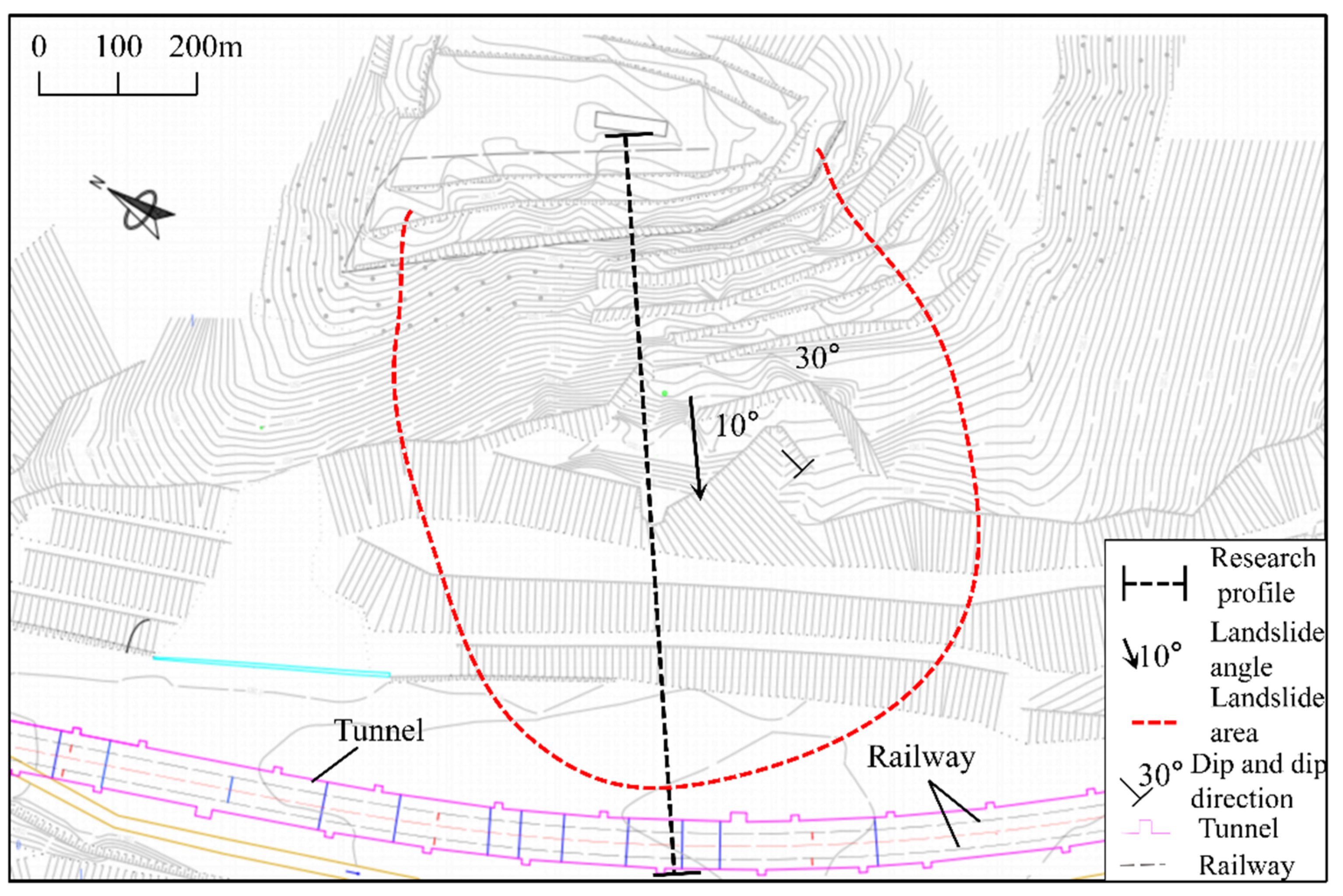


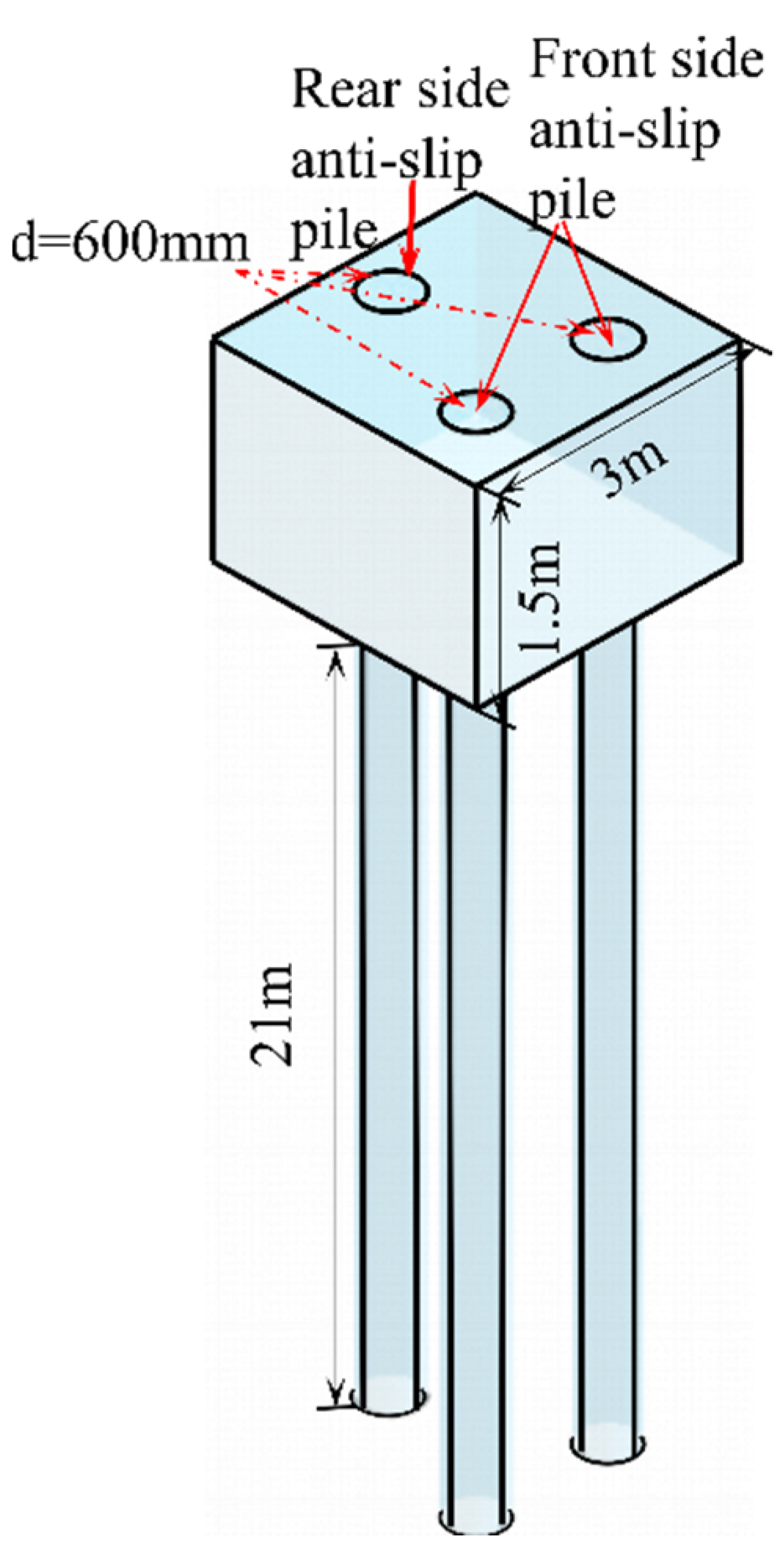


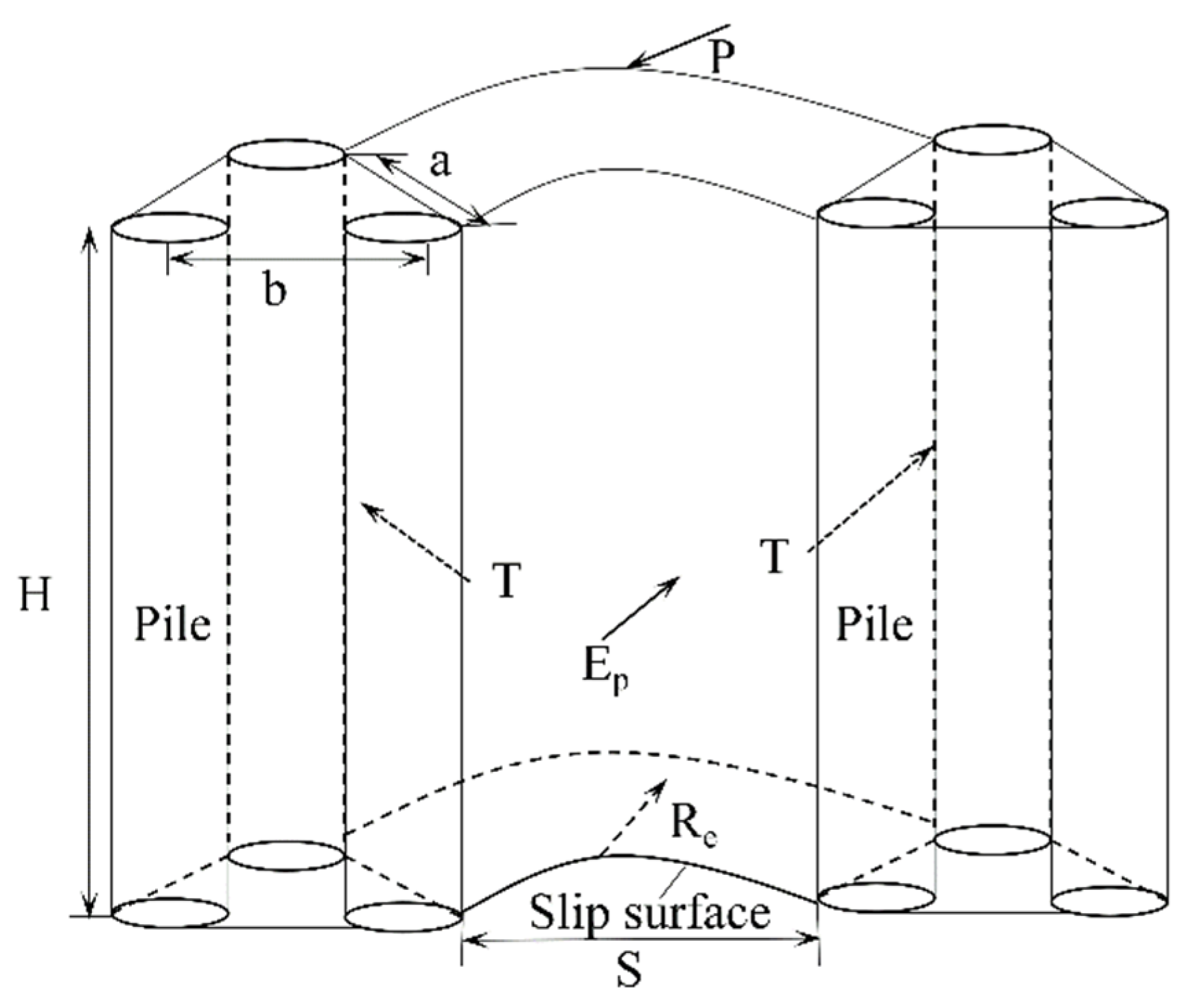
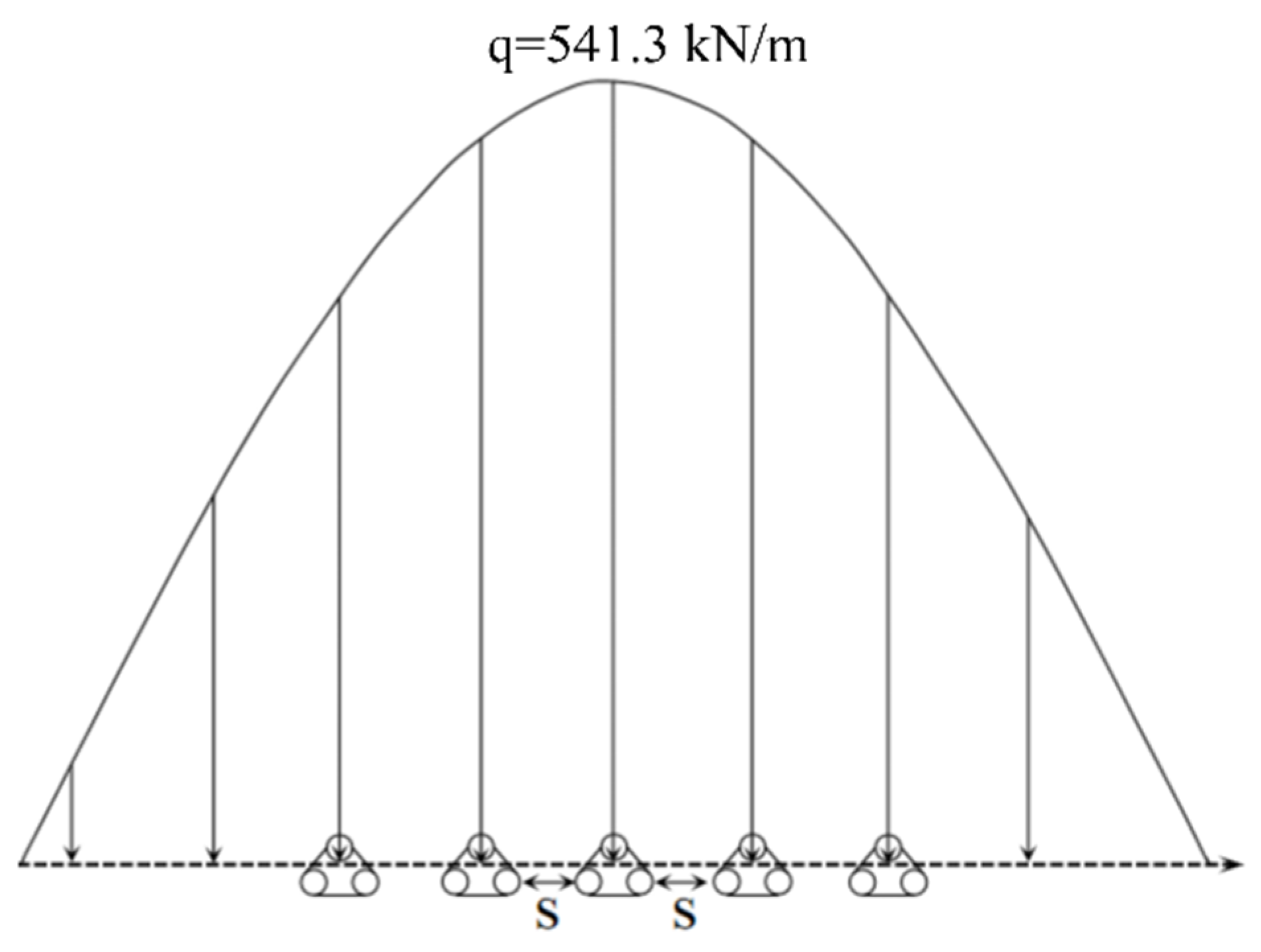
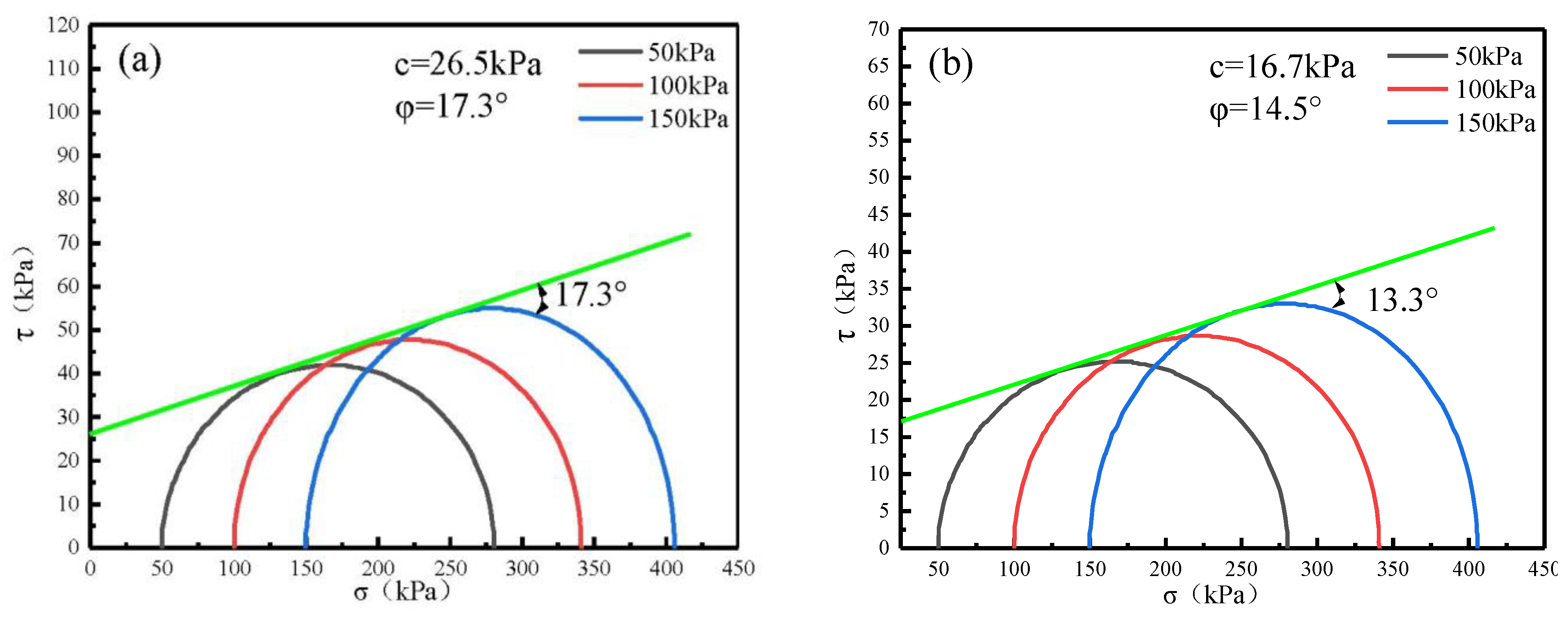
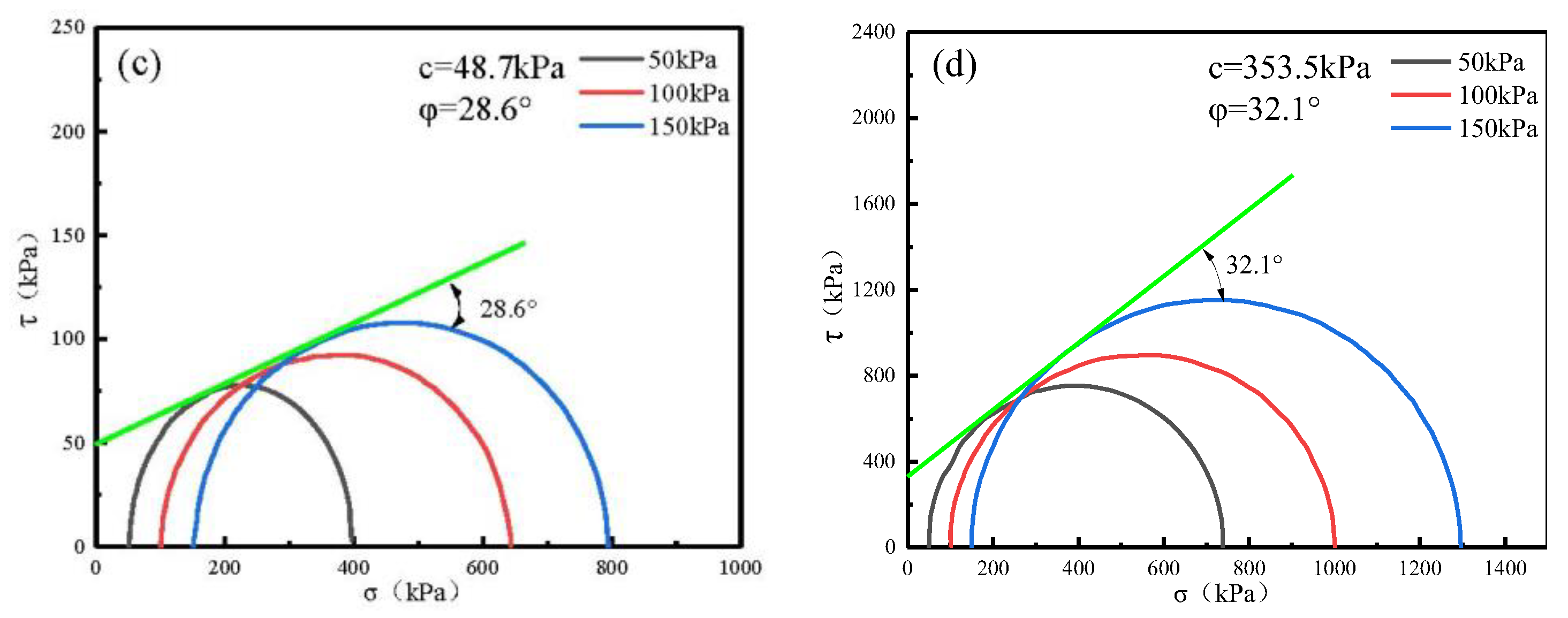


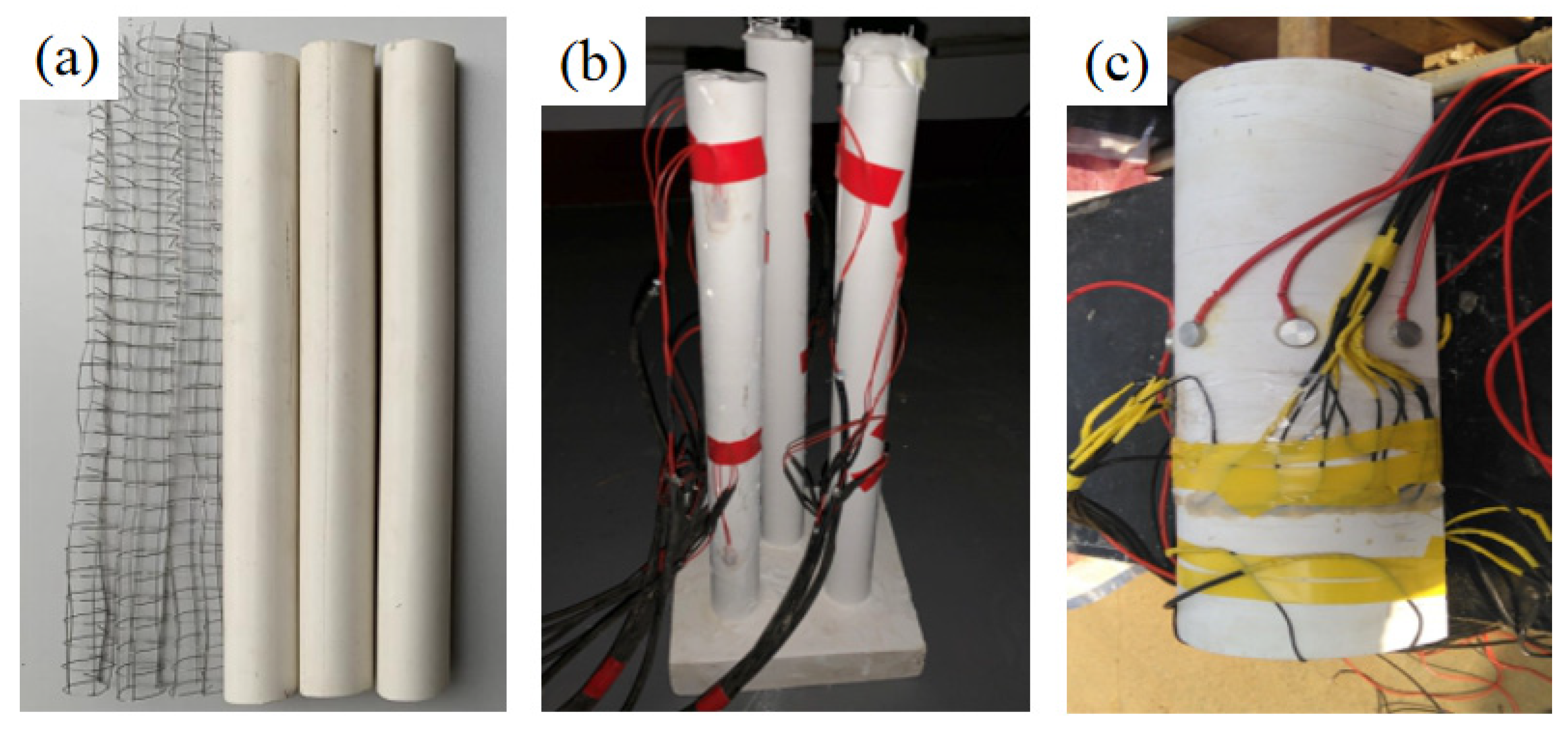

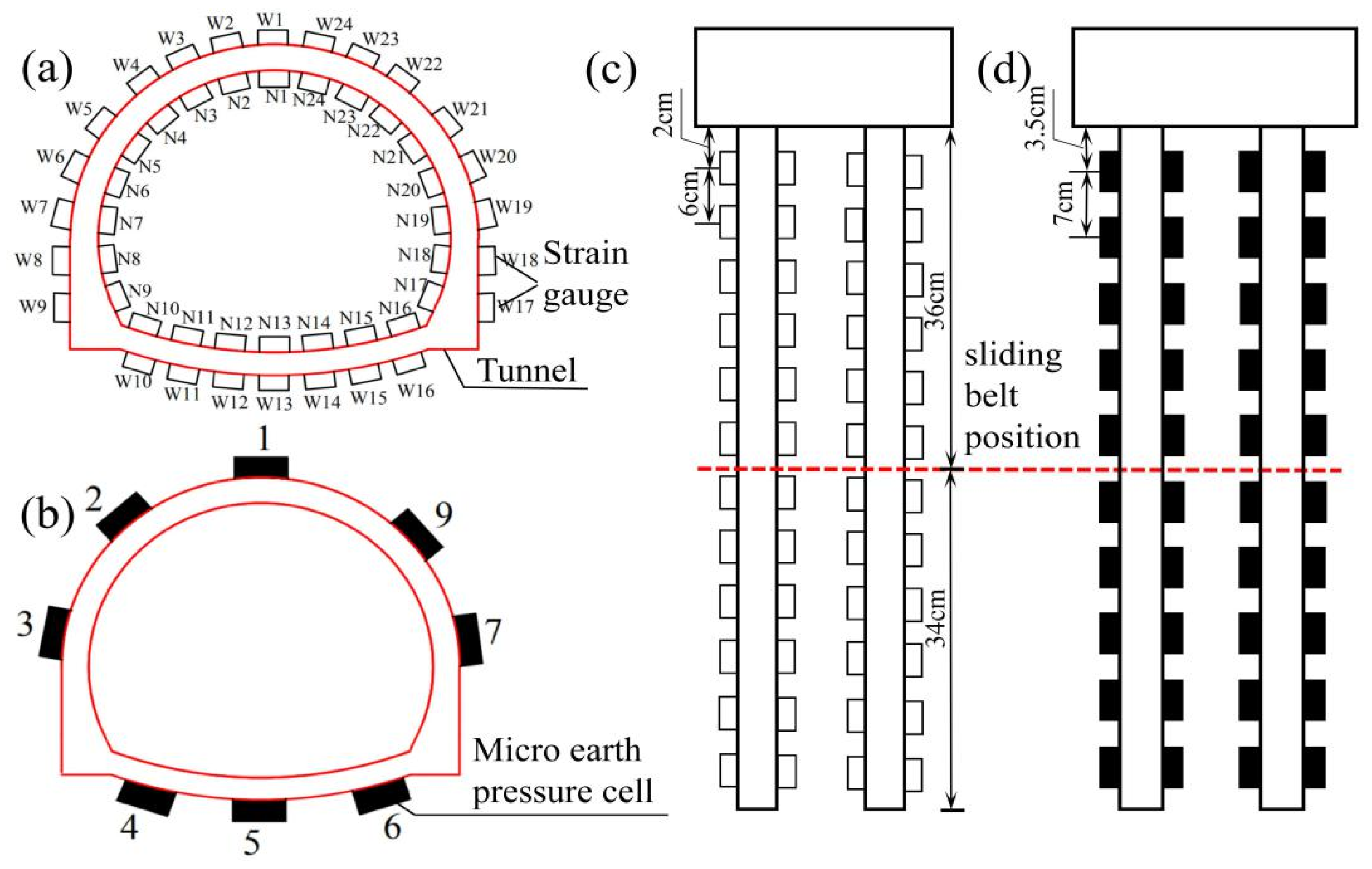
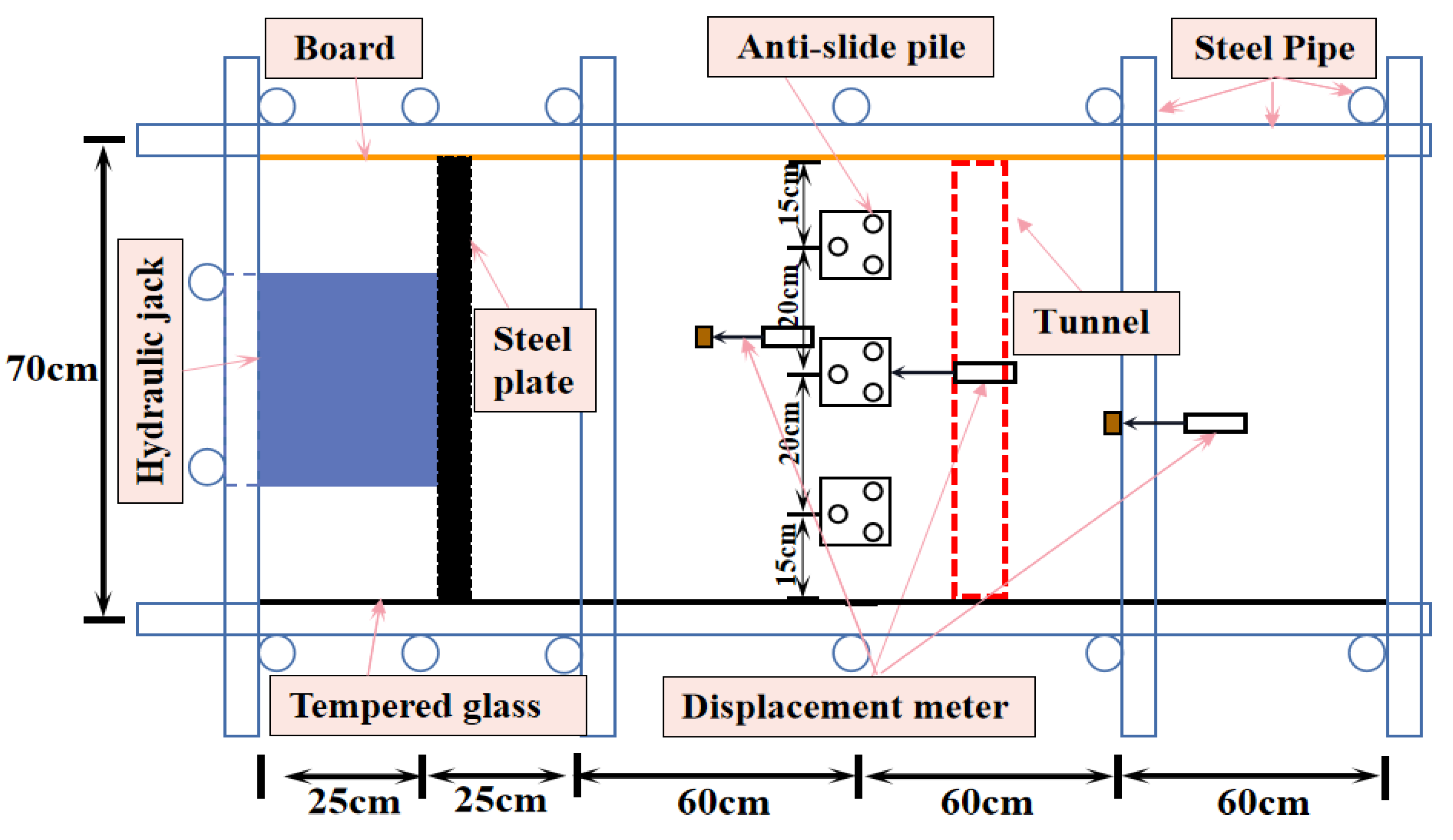
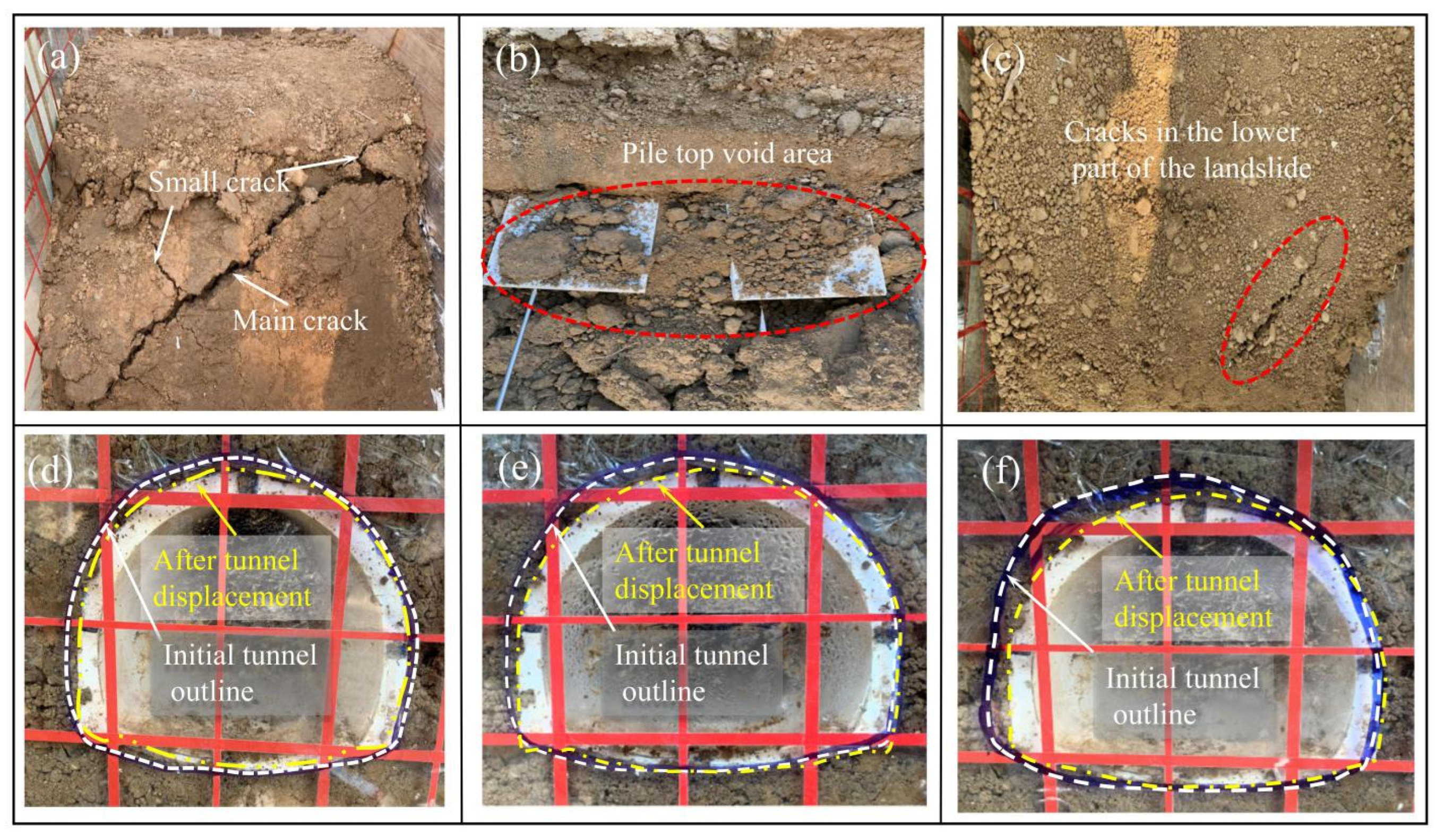
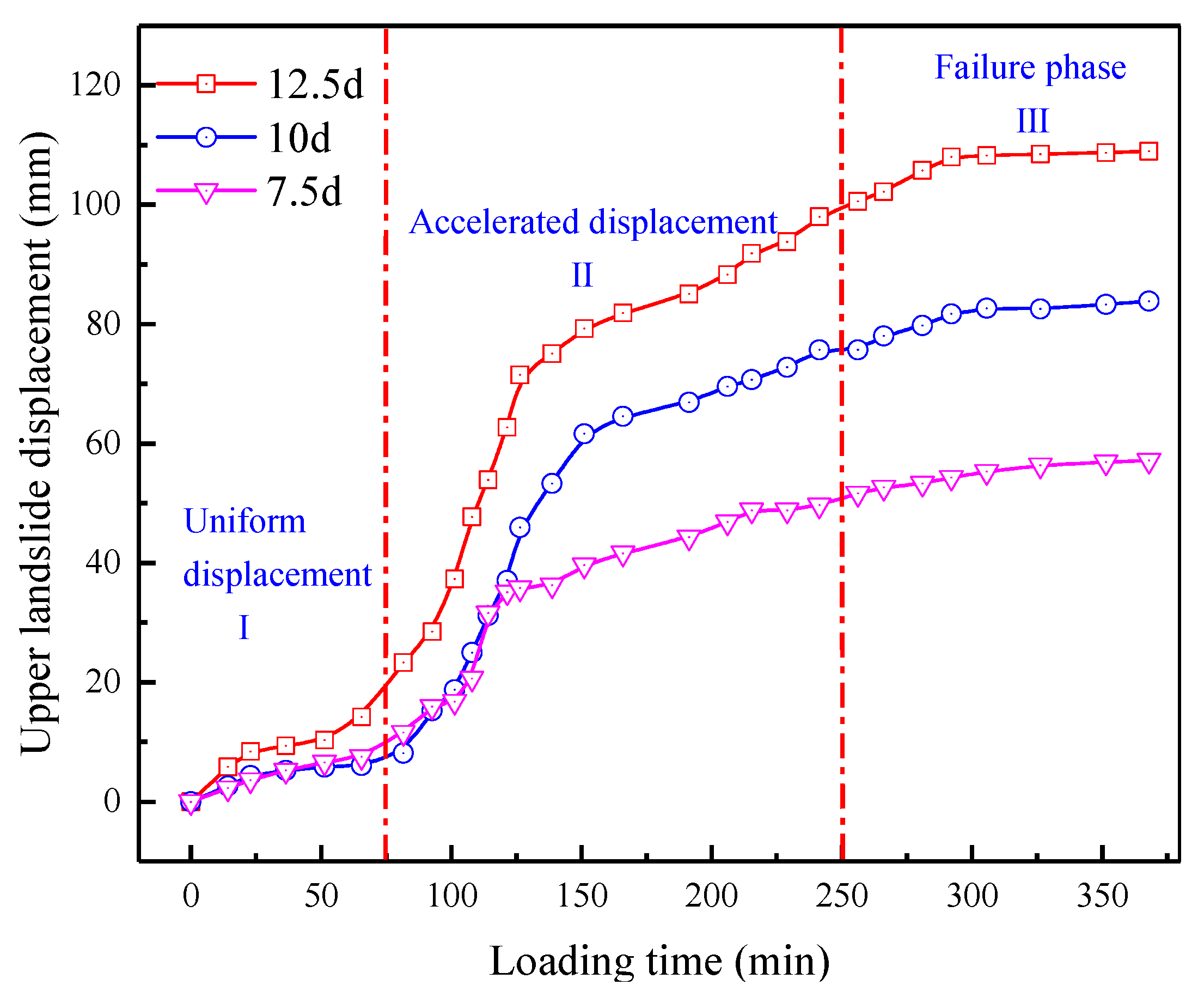
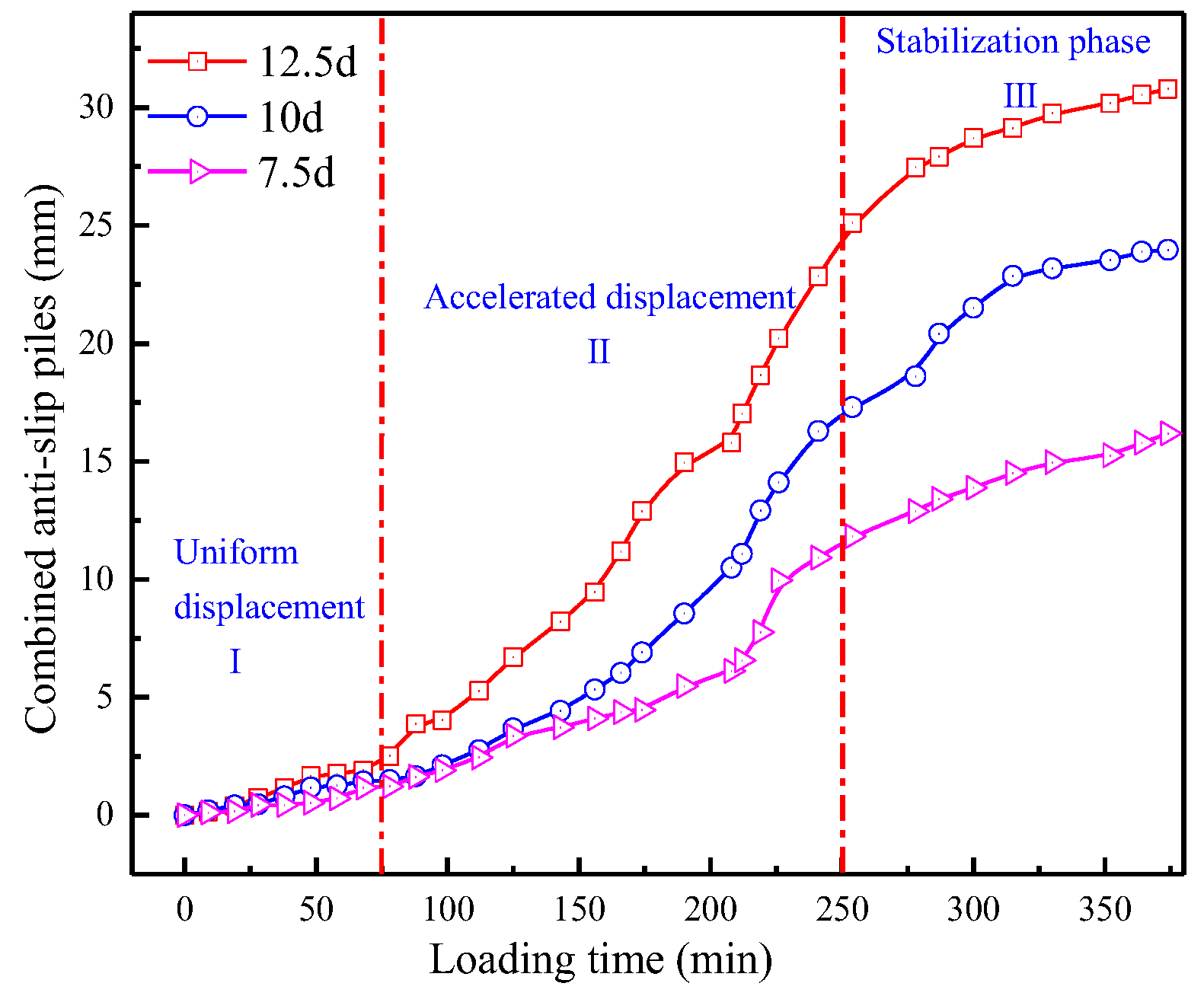


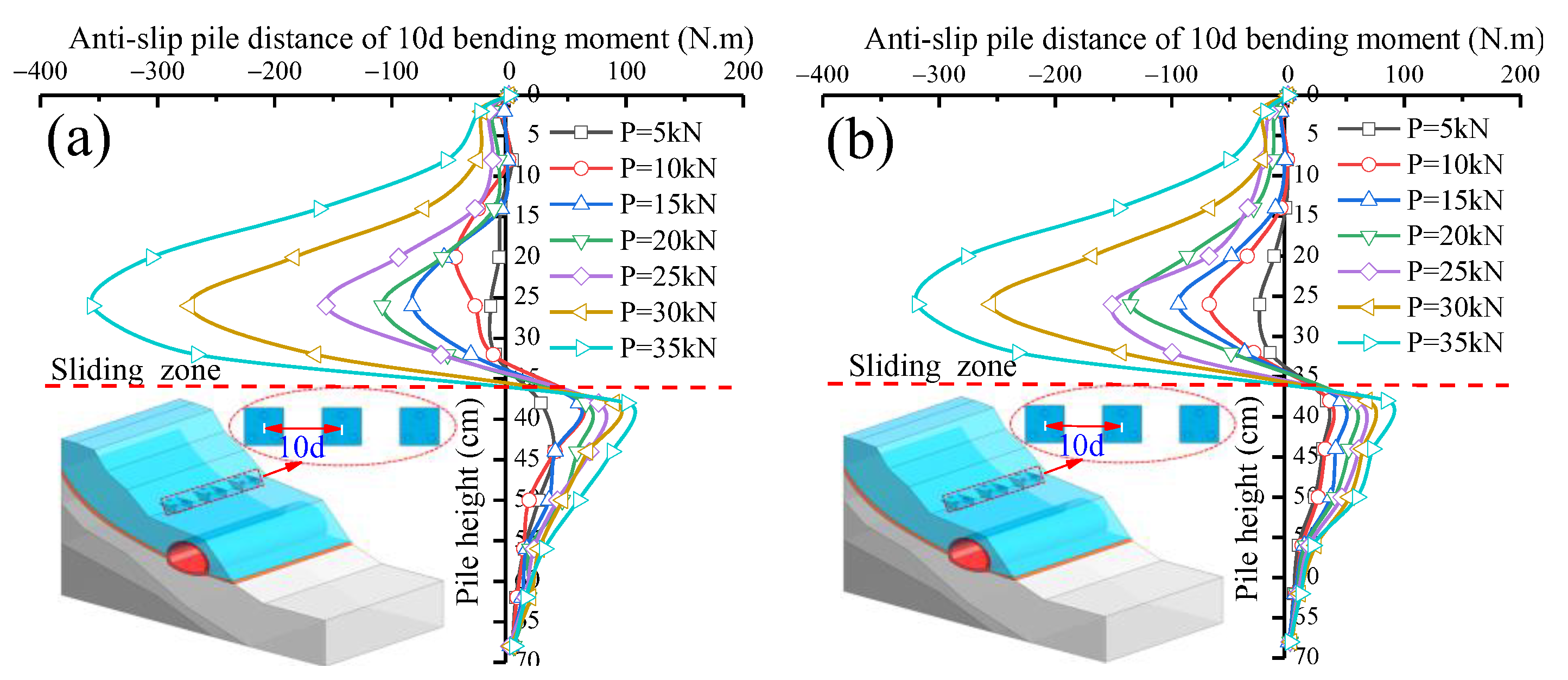







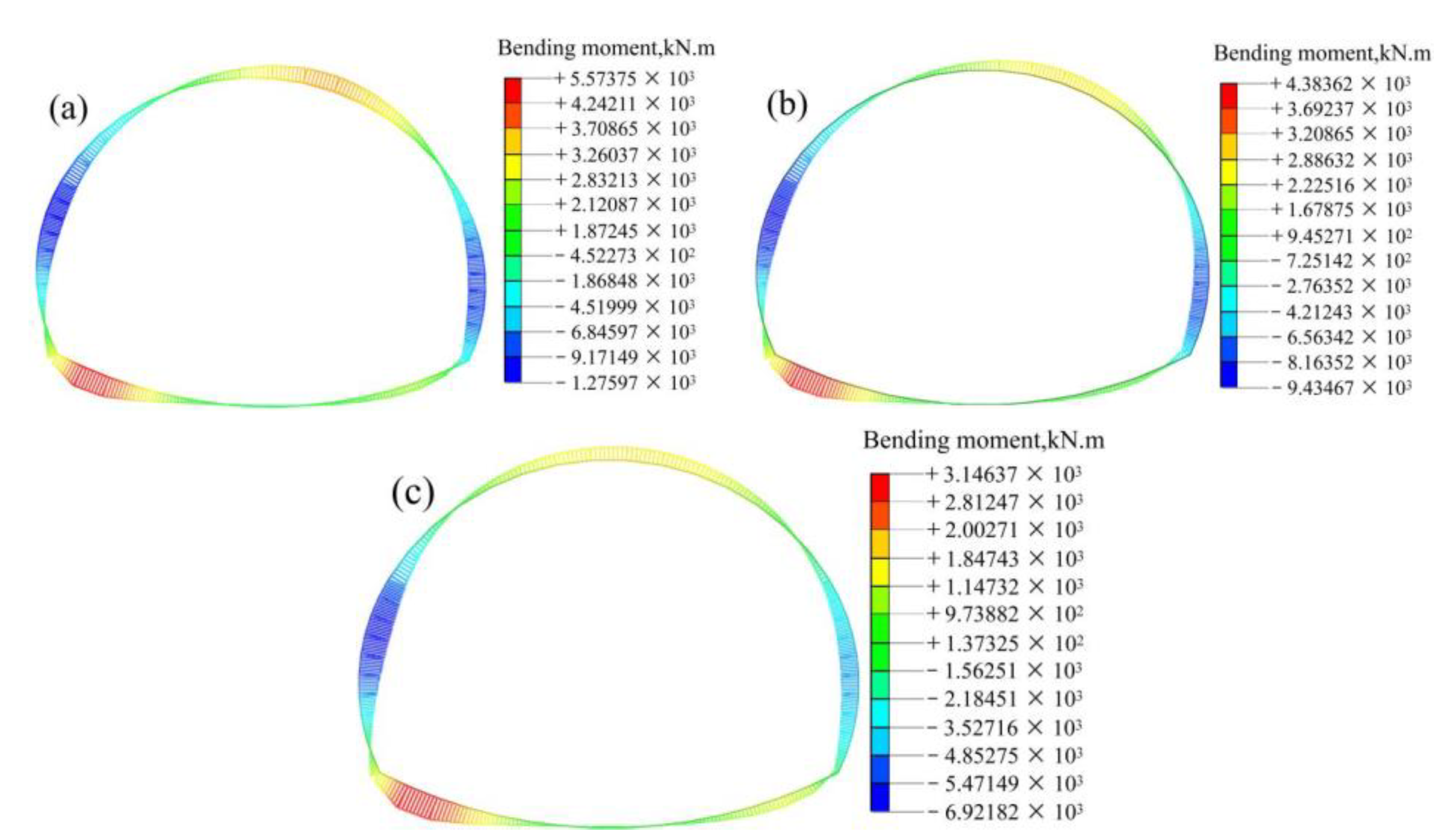

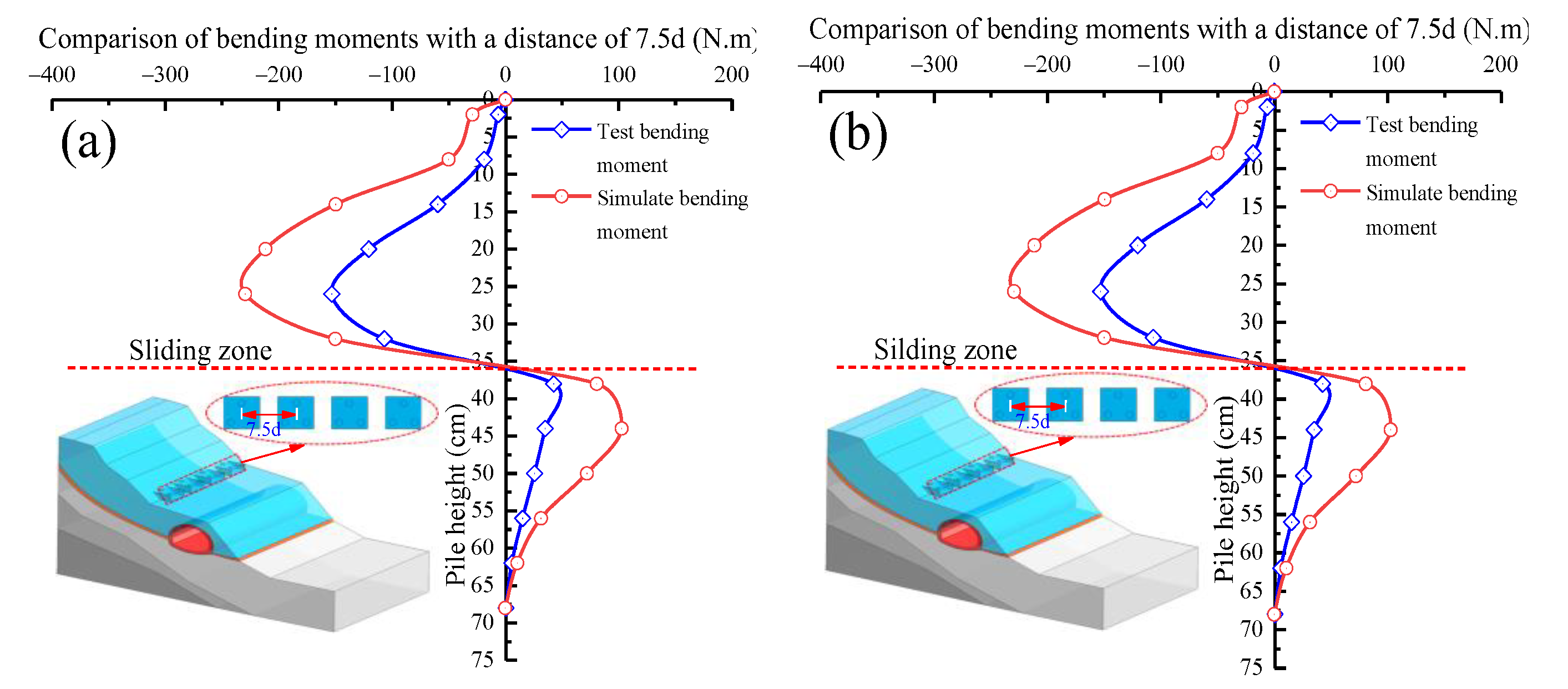


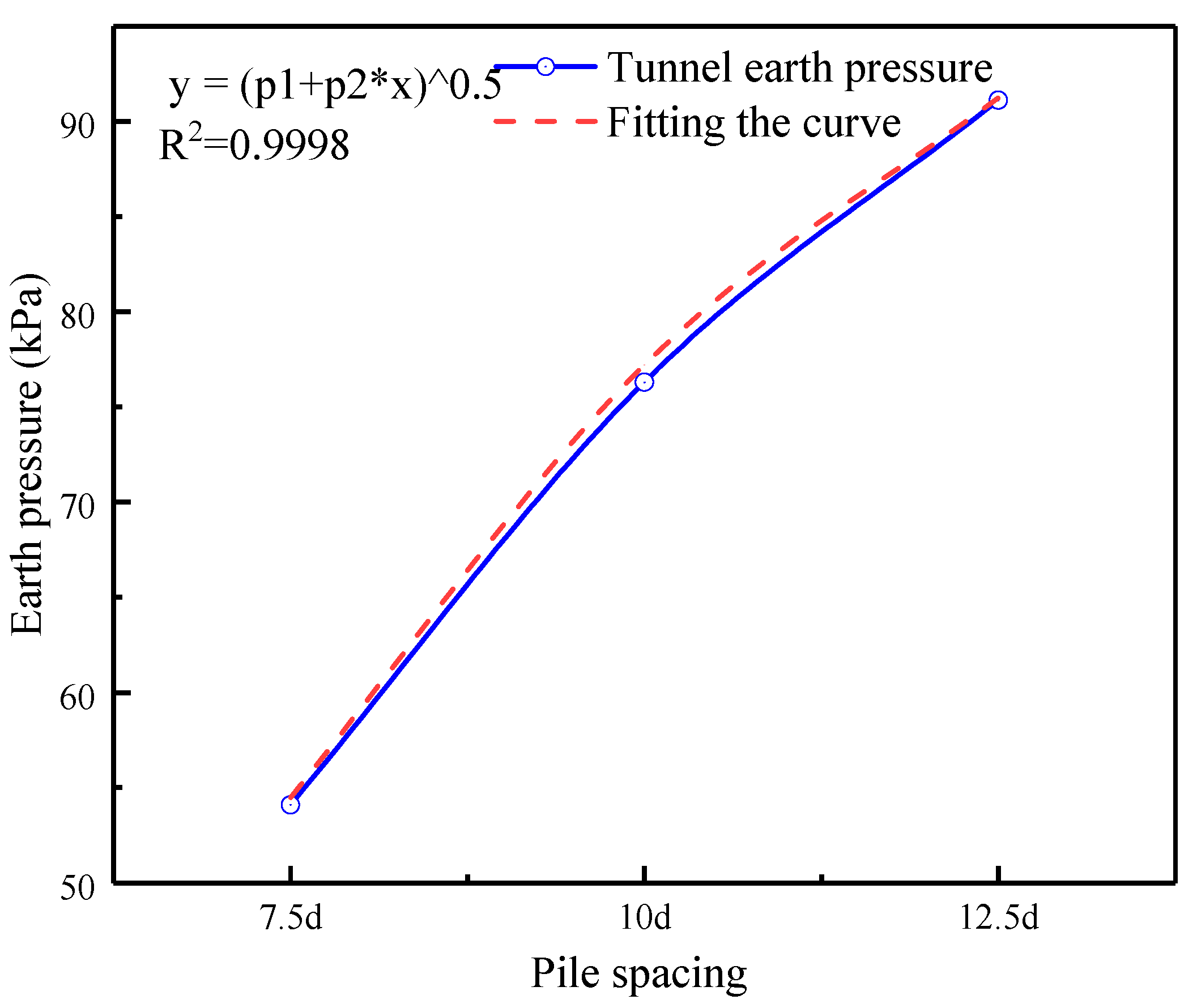
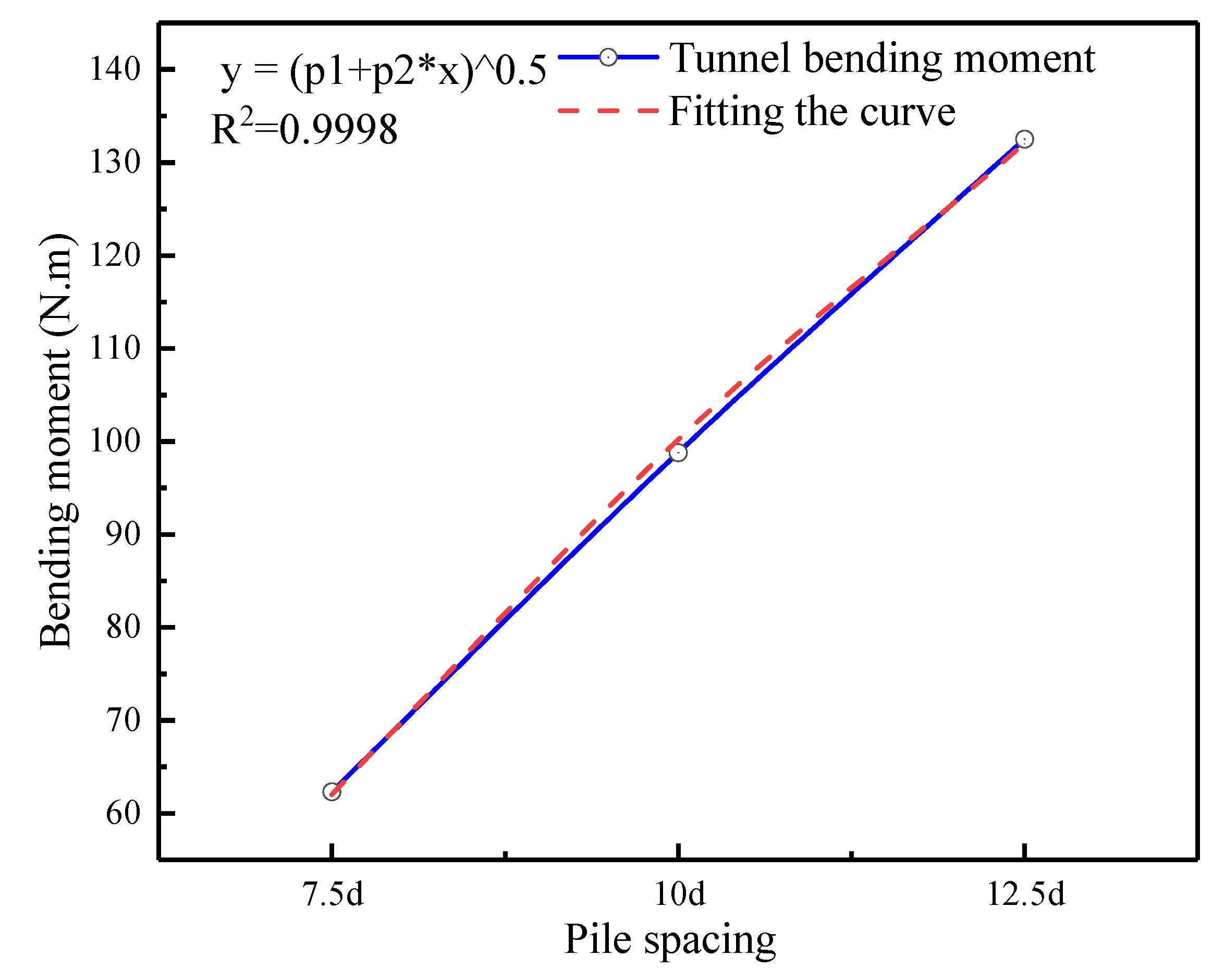
| Material Name | /(kg/m3) | /GPa | C/kPa | φ/o |
|---|---|---|---|---|
| Sliding mass | 1900.00 | 0.62 | 27.3 | 20.1 |
| Sliding zone | 1800.00 | 0.28 | 16.7 | 14.5 |
| Sliding bed | 2200.00 | 1.2 | 43.5 | 29.2 |
| Bedrock | 2700.00 | 2.5 | 361.2 | 33.6 |
| Material Name | /(kg/m3) | /MPa | C/kPa | φ/o |
|---|---|---|---|---|
| Sliding mass | 1900.00 | 18.65 | 26.5 | 17.3 |
| sliding zone | 1800.00 | 9.36 | 18.8 | 13.5 |
| Sliding bed | 2200.00 | 23.72 | 48.7 | 28.6 |
| Bedrock | 27,000.00 | 35 | 353.5 | 32.1 |
| Tunnel | 2100.00 | 289.61 | - | - |
| Anti-slid-pile | 2100.00 | 289.61 | - | - |
| Pile Spacing (cm) | Press (kN) | Loading Time (Min) | Load Holding Time (Min) |
|---|---|---|---|
| 15, 20, 25 | 0~5 | 15 | 20 |
| 5~10 | 15 | 20 | |
| 10~15 | 20 | 30 | |
| 15~20 | 20 | 30 | |
| 20~25 | 20 | 30 | |
| 25~30 | 30 | 40 | |
| 30~35 | 30 | - |
| Material Name | Constiutive Type | /(kg/m3) | E/GPa | C/kPa | φ/o |
|---|---|---|---|---|---|
| Sliding mass | Mohr-Coulomb | 1900.00 | 0.62 | 27.3 | 20.1 |
| Sliding zone | Mohr-Coulomb | 1800.00 | 0.28 | 16.7 | 14.5 |
| Sliding bed | Mohr-Coulomb | 2200.00 | 1.2 | 43.5 | 29.2 |
| Bedrock | Mohr-Coulomb | 2700.00 | 2.5 | 431.2 | 33.6 |
| Tunnel | Elasticity | 2500.00 | 10.4 | - | - |
| Anti-slid-pile | Elasticity | 2500.00 | 10.4 | - | - |
| Type | P1 | P1 |
|---|---|---|
| Earth pressure | −79,630.255 | 12,420.445 |
| Bending moment | −16,521.59 | 2715.800 |
Publisher’s Note: MDPI stays neutral with regard to jurisdictional claims in published maps and institutional affiliations. |
© 2022 by the authors. Licensee MDPI, Basel, Switzerland. This article is an open access article distributed under the terms and conditions of the Creative Commons Attribution (CC BY) license (https://creativecommons.org/licenses/by/4.0/).
Share and Cite
Li, T.; Chen, G.; Liu, Y.; Luo, B.; Zhu, B. Mechanical Characteristics of the Combination System of Medium-Diameter Anti-Slide Piles and Tunnel-Under-Landslide Loading. Sustainability 2022, 14, 12135. https://doi.org/10.3390/su141912135
Li T, Chen G, Liu Y, Luo B, Zhu B. Mechanical Characteristics of the Combination System of Medium-Diameter Anti-Slide Piles and Tunnel-Under-Landslide Loading. Sustainability. 2022; 14(19):12135. https://doi.org/10.3390/su141912135
Chicago/Turabian StyleLi, Tao, Gang Chen, Yitong Liu, Bo Luo, and Baolong Zhu. 2022. "Mechanical Characteristics of the Combination System of Medium-Diameter Anti-Slide Piles and Tunnel-Under-Landslide Loading" Sustainability 14, no. 19: 12135. https://doi.org/10.3390/su141912135






